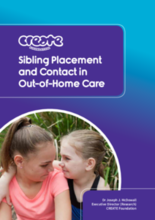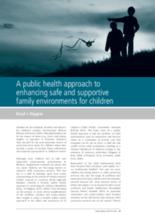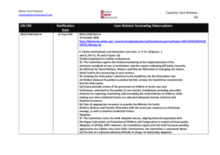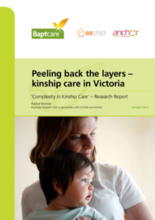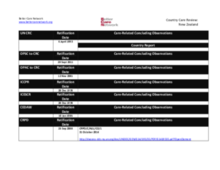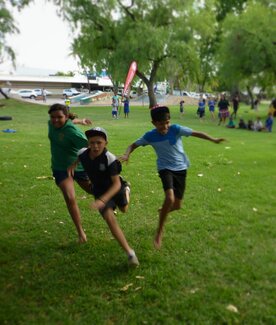

Displaying 611 - 620 of 673
This research report analyzes the contributing factors in children and youth’s ability to be placed in care alongside siblings, as well as how caseworkers view sibling placements in Australia’s child welfare system.
This report proposes a public health approach to promoting safe and supportive family environments for children and preventing child maltreatment in Australia.
This paper systematically reviews surveys of kinship carers in Australia, New Zealand and the United Kingdom to identify messages for policy and practice about the characteristics and support needs of kinship care families.
As part of UNICEF global initiative to End Violence against Children, UNICEF Papua New Guinea ( PNG) is currently working closely with the Department for Community Development and Religion; Department of National Planning & Monitoring; NBC radio and Kundu TV and PNG Coalition on Child Rights to undertake a yearlong END VIOLENCE AGAINST CHILDREN campaign at national and sub national level. The Campaign in Papua New Guinea aims to make violence against children VISIBLE by urging ordinary citizens, law-makers, government, the media, civil society organizations and faith based organizations throughout the country to TALK OUT and TAKE ACTION to prevent violence against children from happening and to address when it does by providing care and support for survivors. The campaign was launched on 18th June and will be conducted for a period of one year
Two Digital Media students at CQUniversity, a university in Queensland Australia, created an animated video which encourages people to register to become foster or kinship care to children in Queensland.
The Committee considered the combined second to fourth periodic reports of Fiji (CRC/C/FJI/2-4) at its 1909th and 1910th meetings (see CRC/C/SR.1909 and 1910), held on 4 and 5 September 2014, and adopted, at its 1929th meeting, held on 19 September 2014, the following concluding observations.
Baptcare, OzChild and Anchor - three organizations that provide kinship care services in Victoria, Australia - commissioned this research to explore the impact that complexity in care arrangements has on children and families in kinship care.
This country care review includes the care-related Concluding Observations adopted by the Committee on the Rights of Persons with Disabilities as part of its examination of the first periodic report of New Zealand (CRPD/C/NZL/1) at its 143rd and 144th meetings, held on 15 and 16 September 2014.
This animated video, made for an Australian audience, illustrates the orphanage industry in Cambodia, particularly how Australian “voluntourists” unwittingly contribute to the exploitation and traumatization of children in orphanages.
The theme is Stepping up the Pace. Online registration has opened and the conference organisers have issued a call for abstractsfor original contribution to the field.

